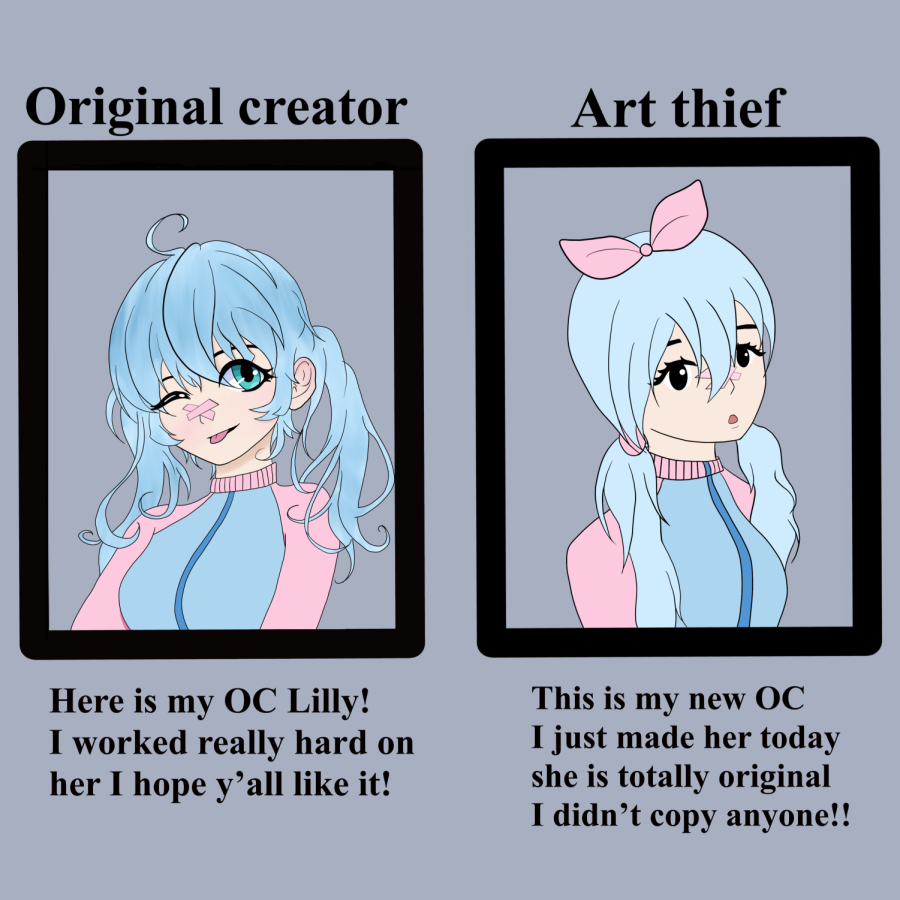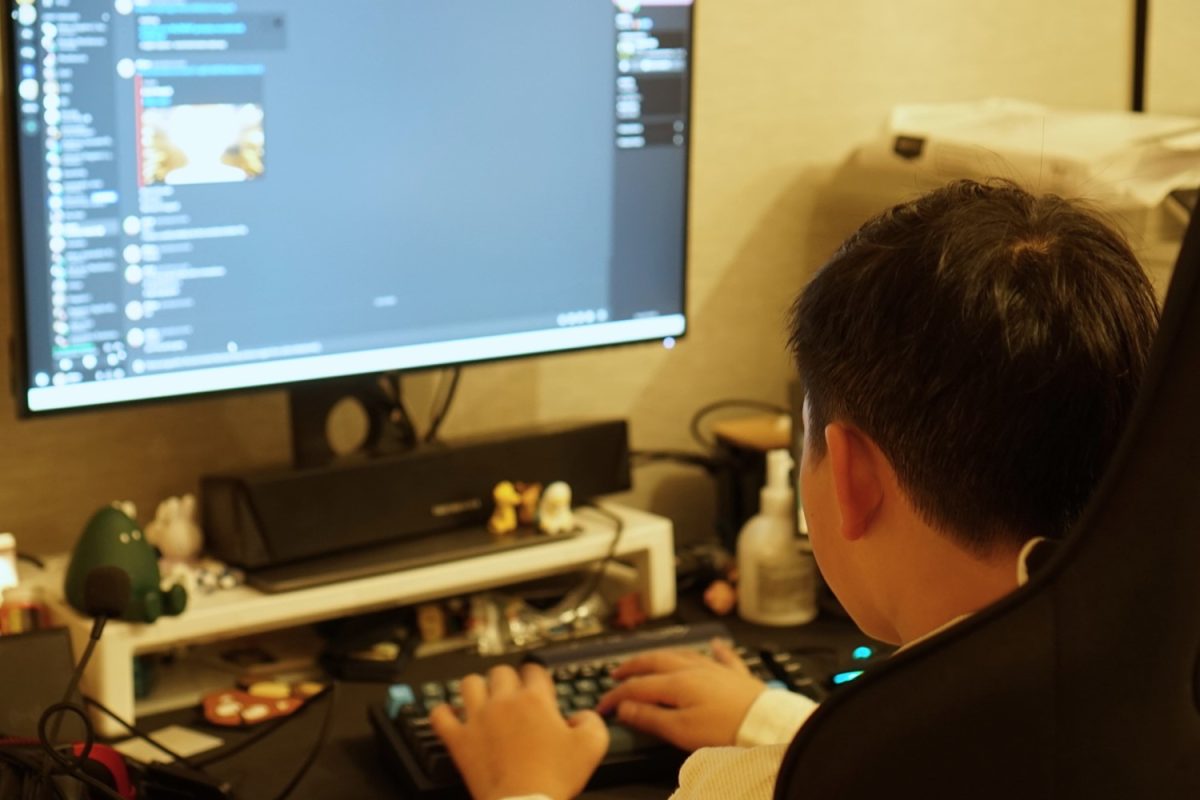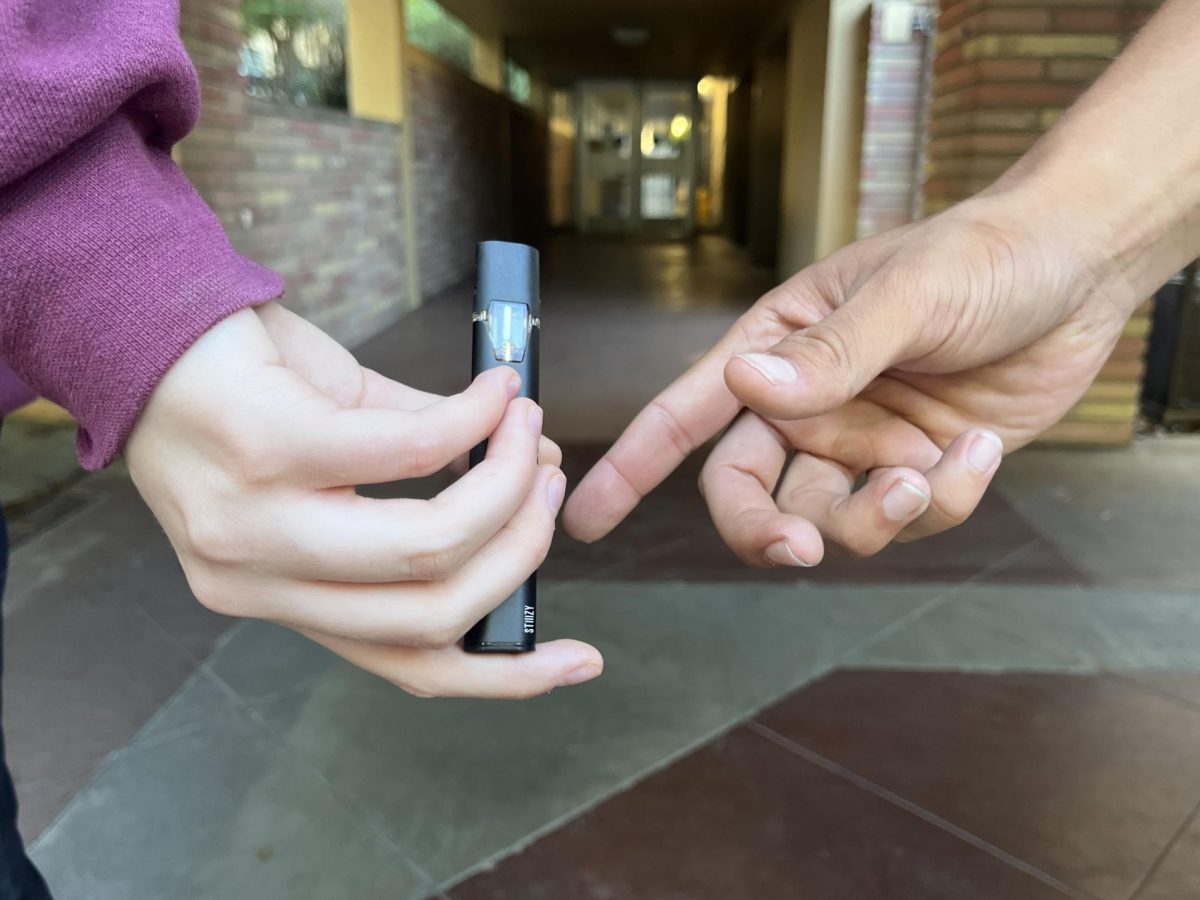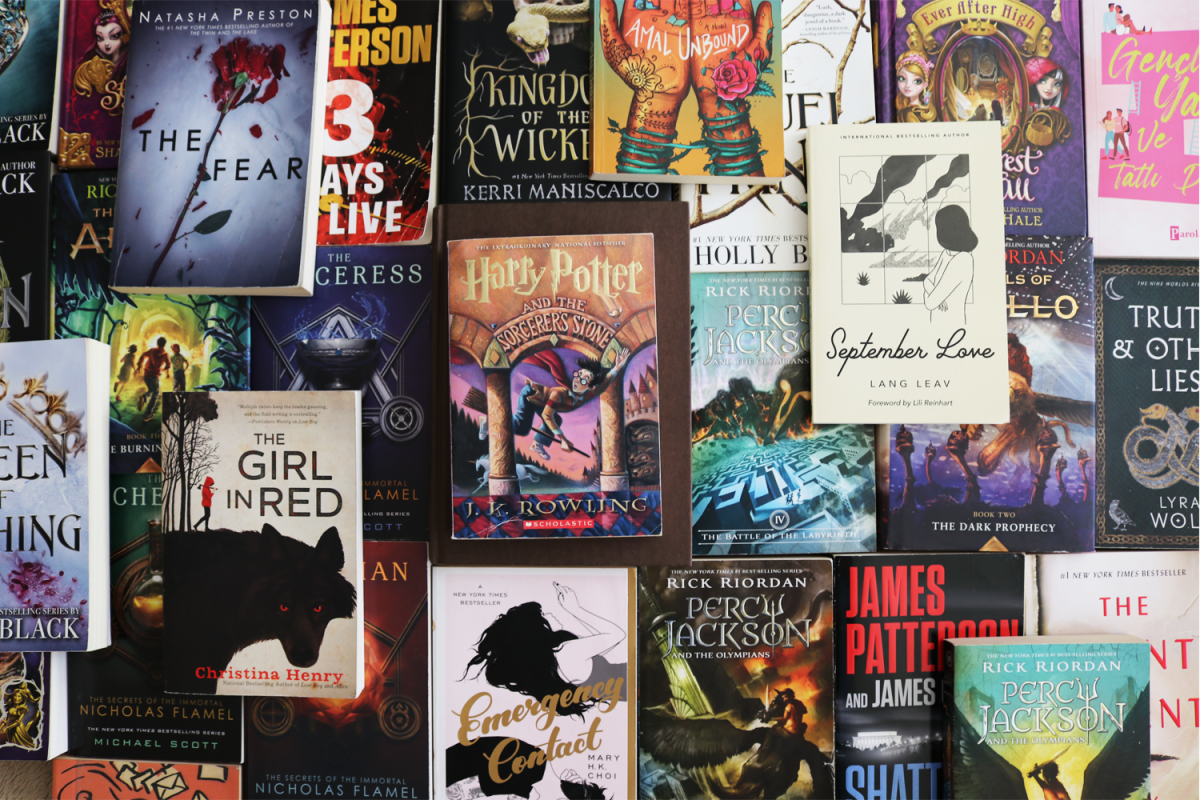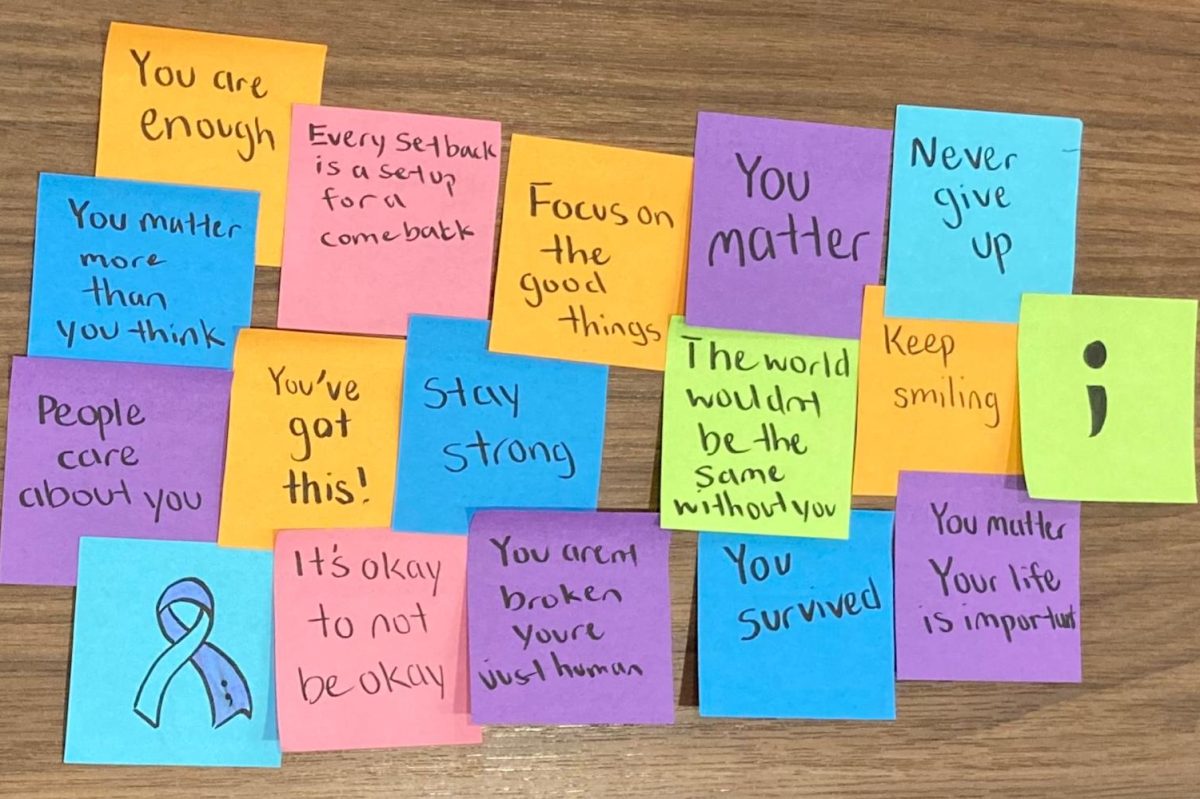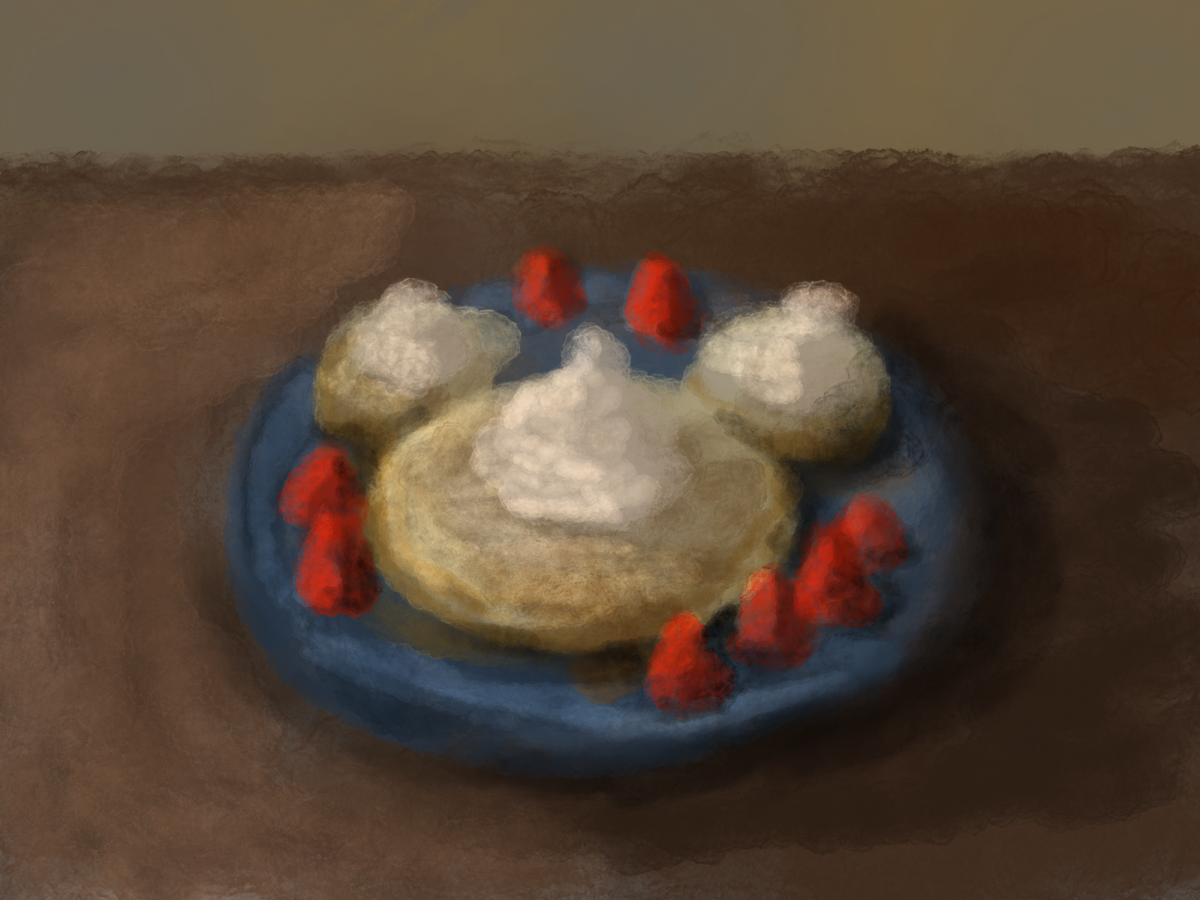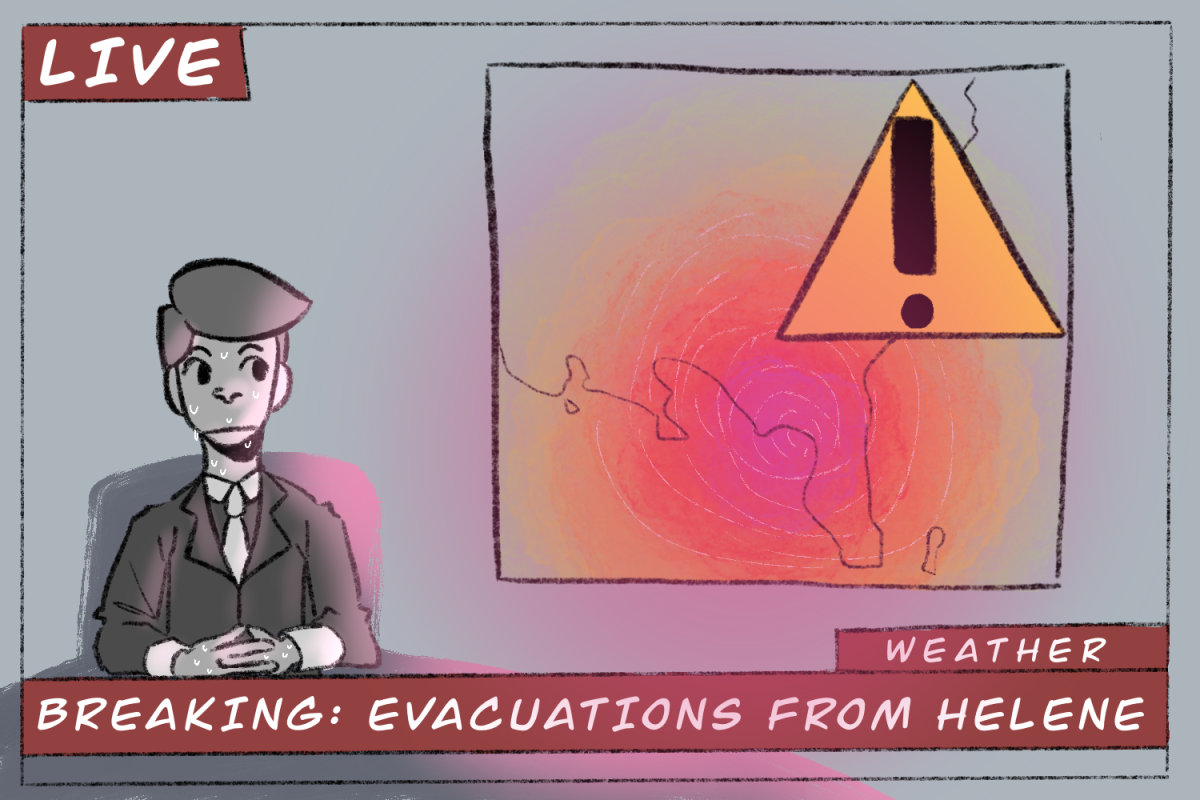When people think of an art thief, most think of either physical art thieves who steal paintings or people who repost someone else’s art without credit. Both are harmful, but other types of art theft go beyond simply reposting the work of another without accredidation.
Reposting is the leading way art thieves steal. Reposting is when someone takes a screenshot of someone else’s art and then posts it as their own. Reposters are rampant on sites like Instagram, Tumblr, and DeviantArt, which are known for supporting artists. While all three have reporting functions, these platforms do not always take down the stolen art.
“Instagram really doesn’t care about artists,” said Tenshipastel, an artist on Instagram. “The only time they’ll care is if an artist is big [indicated by 3,000 followers or more and an inspirational style]. For people like me or any of the smaller artists, if their art gets taken, nothing’s going to happen.”
Whenever an artist posts artwork online, they have to worry about whether their art is going to get stolen. Many add watermarks to their drawings to try and prevent others from taking art.
Some artists allow others to repost their art, but accounts who repost with permission need to give credit. Each artist is different, and their bios usually reflect their feelings on others reposting their art.
Some art thieves may ask an artist for permission to repost their work, but they will not wait for a response. Whether or not an art thief asked an artist, if they do not have consent to post that artist’s work, they are stealing, especially if the work is used for profit.
Most artwork posted on Deviant art is protected by Creative Commons, specifically Attribution-NonCommercial-NoDerivs 3.0 Unported (CC BY-NC-ND 3.0).
According to the official Creative Commons site, appropriate credit must be given. This means that when an artist posts their art on DeviantArt, as long as consent and credit are given, someone else could repost it. However, reposters tend not to use credit or ask the original artist for consent.
Reposters are not the only type of art thieves. Tracers, people who heavily reference, and original character thieves, also known as OC thieves, are also a big problem, and they are more challenging to catch, especially since there is no strict copyright law against their work.
Tracers and people who heavily reference are very similar in the sense that they trace the lines of a pose. In digital art, it is possible to put someone else’s artwork on a layer and then have a separate layer on top so a person can easily copy the artwork. Usually, the people who do this will post the art, claiming it is their own, but in reality, they took the lines from someone else.
On YouTube, there are several videos of people talking about tracers and the negative effects they have on the community, as big artists get traced a lot. Sometimes, beginner artists will do this to practice anatomy. Still, when an artist only traces and claims it is their art when posting, it becomes a problem.
One incident of this was when an artist on DeviantArt, Chiibirose, was tracing another DeviantArt artist named Ipun. Chiibirose claimed she was inspired by Ipun, and Ipun asked Chiibirose to stop but she refused to. It became a big discussion in the community after Chiibirose became more and more popular. Eventually, Chiibirose left Twitter and DeviantArt after being harassed.
Tracing cannot be confused with referencing, however. Referencing is common and accepted in the art community.
“Referencing is like looking at a picture on Pinterest, Google, etc. and trying to draw it in your version. Heavy referencing is copying it, like tracing.” said Coffee.hot.Chocolate, another artist on Instagram.
Referencing can help an artist with anatomy and give them ideas for a new piece. Heavy referencing and tracing, however, are not accepted in the community.
People who trace and heavily reference are hard to find and expose, as sometimes, they warp the original artist’s work.
Still, media platforms like Instagram, Tumblr, and DeviantArt do little to stop it.
On Instagram and DeviantArt, if a follower notices that one of their favorite creators’ art was stolen, the follower cannot do anything; Instagram only allows someone to report if their art was stolen, not someone else’s. The most that a follower could do is report the account as spam.
Artists also try to report original character (OC) thieves, people that take someone’s character design and claim it as their own, but Instagram’s reporting policy mainly applies to reposters. Reposters and OC thieves often try to deny their actions, and occasionally they will blame the creator of the art.
“The person who [stole my OC] blocked me. Then, they made up an excuse to friends that went and talked with them, saying they found me on DeviantArt and that they forgot who the original artist was. I never posted the character on DeviantArt in the beginning. If they forgot who I was, I would not have been blocked on this platform, so I was distraught,” Tenshipastel said.
OC thieves are one of the hardest art thieves to catch due to their art styles being different from the original artist’s. If someone steals an artist’s OC, the theft may go unnoticed for an extended period of time.
There is no direct copyright law that states that OC theft is illegal, but many artists agree that it is unethical. They believe that just because an artist creates a character does not mean it is alright to steal.
If someone drew an “original character” that looked exactly like Harley Quinn, people would be upset and claim that the artist stole the character. Artists put a great deal of work into making original characters, so when others draw their characters and claim it as theirs, it invalidates the work that the original artist did.
“I took so much time depicting my OC’s eyes and hair and everything to look. The fact that her design got taken, changed around, and made it seem like it was not my character hurt me because she was my character,” Tenshi said.


